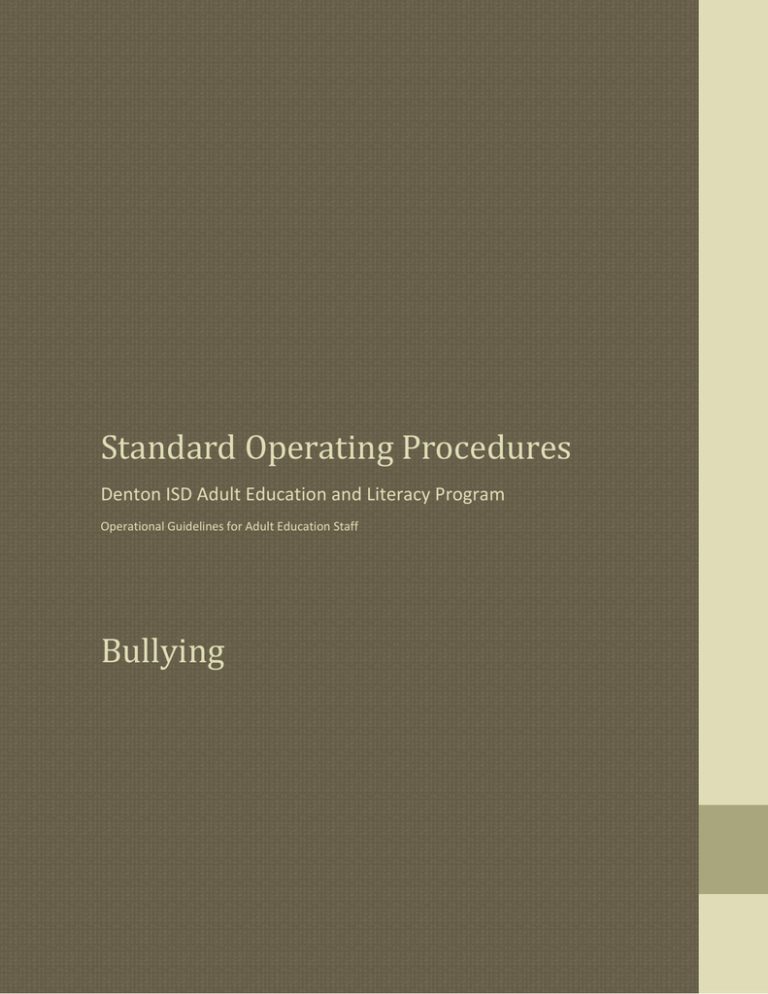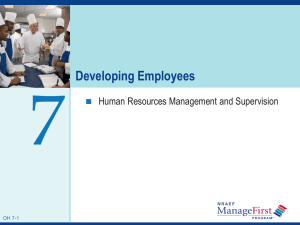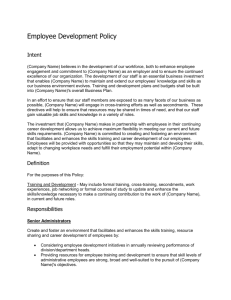Cross Training
advertisement

Standard Operating Procedures Denton ISD Adult Education and Literacy Program Operational Guidelines for Adult Education Staff Bullying Denton ISD Adult Education and Literacy Program Keys to Creating a Cross Training Program Think of cross training, or training an employee on tasks outside of his or her job, as an essential element of your business. A cross-training program: Reduces turnover by rejuvenating an employee’s job and eliminating stagnation by providing a professional development opportunity. Provides flexibility in managing your workforce while eliminating a potential for disaster if an employee leaves your workplace. Increases productivity as cross-trained staff members can assist others during busy times. Decreases departmental and position silos by creating a team atmosphere, while improving understanding between departments and individuals. Makes employees more valuable to the company by obtaining new skills. Reduces employee stress induced by vacations and sick days as others understand the job and can fill in. A good cross-training plan takes time to strategize and implement, so don’t wait for disaster to strike. Begin planning now to build cross-training into your yearly training plan. Cross Training A good cross-training plan takes time to strategize and implement, so don’t wait for disaster to strike. Begin planning now to build crosstraining into your yearly training plan. Standard Operating Procedures Standard Operating Procedures 1 When creating a cross-training program: Standard Operating Procedures 2 Determine your organization’s objectives. What do you want your crosstraining program to accomplish and how will you measure if your program is a success? A sample objective could be, reduce turnover to only five individuals by the end of this year. Obtain employee buy-in. Explain why your organization is beginning a crosstraining program, such as to increase employees’ skills and coverage during vacations and to create a team approach. Make sure they understand that job security will not be affected if more than one individual understands the role. Ask employees about their objectives and career goals to help them obtain the skills they would like to learn. Analyze your employee’s skills. Create a spreadsheet with the following columns: employee’s name, position, skills required for the position and employee’s skills. Add a row for each of your employees. Then compare your employees’ skills to determine who best can successfully cross train to fill a role or who would be a best fit based on the skills they want to learn. Consider naming two individuals who can cross-train per position. Set training time. Do you want employees to train nonstop for a week or month, or do you prefer to train one hour a week? Establish guidelines for individual trainings. Make sure that all trainers understand their roles, for example, developing a training presentation, presenting the material, providing hands on practice and then testing.






